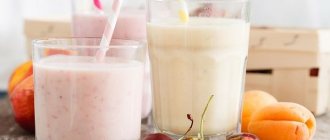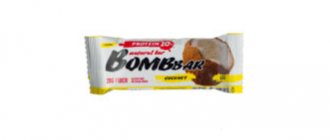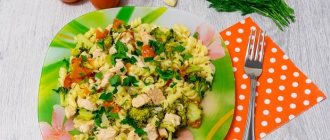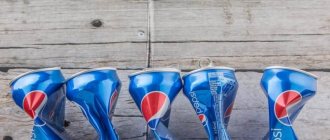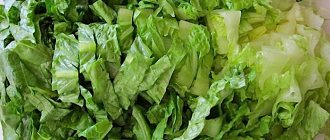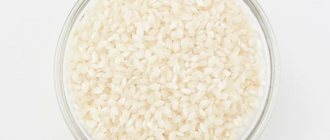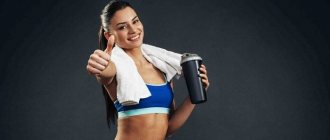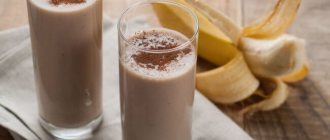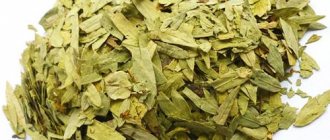The issue of low-calorie alcohol usually worries the female half of society, since it is women who, in order to attract the attention of others, are obliged to monitor their figure and count the number of calories. This article was prepared exclusively for women and girls who are concerned about their appearance and waist measurements.
Everyone knows the fact that alcohol is a high-calorie product, which, combined with overeating at a party or feast, can add several kilograms. Unfortunately, there is bad news for cocktail drinkers: when mixing several spirits with sweet syrups, the number of calories in one glass can exceed 800 kcal! What if several glasses were drunk and, in addition, with dessert?
Can you imagine how many calories can be accumulated in one evening? So that all these thoughts about your figure don’t torment you, read below about the calorie content of each type of alcohol, so you can find out which alcoholic drinks are better not to combine with fatty or sweet foods, and which ones are completely harmless to your appearance.
TOP least calorie alcoholic drinks
Don't want to gain extra calories during the New Year holidays? Then choose the lowest calorie alcohol for your table, and we will help you with this. Any food and drink has a certain calorie content. Alcohol is no exception, although dietary alcohol can be found here too.
Which drink is considered the lowest calorie?
By calorie content, nutritionists understand the amount of energy that is obtained during the breakdown of nutrients that enter the body.
Any alcohol is prepared from certain varieties of grain crops that contain carbohydrate components. Thus, ethyl alcohol will also contain them.
According to GOST 18300-72, adopted in our country in 1972, the calorie content of ethyl alcohol is 7 kilocalories. However, during the manufacturing process, the final vodka product turns out to be higher in calories, and on average, the calorie content is 200-280 units per 100 grams of alcoholic drink.
The lowest calorie alcohol, according to nutritionists, is light non-alcoholic beer. It contains approximately 60 kilocalories per 100 grams.
Despite the fact that the product is essentially a dietary product, people gain weight from it much faster, because beer drinkers drink this low-calorie drink not in grams, but in liters.
As a result, the daily caloric content of a good snack significantly exceeds all permissible standards. A regularity has been established: the stronger the alcoholic beverage, the higher the calorie content. This statement is true if you do not take into account alcoholic cocktails.
By mixing low-alcohol ingredients and stronger drinks, generously seasoning them with sugar syrups, you get super high-calorie products. Having drunk such a mixture in order to maintain your figure, you can already refuse to eat - after all, in terms of calorie content, the cocktail can replace a full meal.
Why don't you get better from vodka?
Observing people suffering from alcoholism, doctors concluded that drinking strong alcohol does not contribute to obesity or simply weight gain.
The fact is that drinking ethyl alcohol significantly slows down the metabolic rate. If a person consumes a hearty snack while drinking alcohol, the body expends significant effort in processing them. Therefore, most of the calories are spent on such internal work, aimed at removing toxins from the body, and not on accumulating nutrient reserves.
This fact also explains the increase in appetite during a feast with alcoholic beverages.
Does wine help you lose weight?
In European countries, lunch or dinner is traditionally completed with a glass of red or white grape wine. It is believed that in this amount alcohol promotes weight loss.
According to scientific research, the positive effects of such low-alcohol drinks on the body have been established:
- The acidity level of gastric juice is normalized, which contributes to the rapid and complete breakdown of food;
- The production of bile increases, as a result of which the metabolic functions of the liver are activated. The result is to prevent food from stagnating and rotting;
- The production of insulin under the influence of the components of grape wine occurs within normal values, which prevents the deposition of fat reserves;
- The content of the vitamin-mineral complex accelerates metabolic processes and strengthens the body's defenses.
Calorie table
Each manufacturer is required to indicate its calorie content on the label of an alcoholic product. The list of calorie content per 100 grams of drink is contained in the tables below:
| Name | Calorie content (kcal) per 100 g. |
| Light beer 11% | 43 |
| Dark beer 13% | 49 |
| Cider 4.7% | 50 |
| Sbiten 4.5% | 54 |
| Dry wine | 65 |
| Champagne Brut | 70 |
| Red wine 12% | 75 |
| Semi-dry wine | 78 |
| Semi-sweet wine | 88 |
| Sweet wine | 100 |
| Madera 18% | 138 |
| Sherry 20% | 148 |
| Fortified wine | 153 |
| Vodka Nemiroff | 222 |
| Vodka Finland | 222 |
| Whiskey 40% | 223 |
| Gin 40% | 223 |
| Rum 40% | 223 |
| Brandy 40% | 225 |
| Stark Vodka | 232 |
| Vodka Myagonkaya | 235 |
| Cognac 40% | 240 |
| Port wine 20% | 169 |
| Dessert wine | 170 |
| Pouring | 200 |
| Liqueur 24% | 325 |
Calorie content of different alcohol-based cocktails:
| Alcoholic cocktails | |
| Name | Calorie content (cal) per 100 g. |
| Rum and Diet Coca-Cola | 45 |
| Grape wine with carbonated non-alcoholic tonic | 72 |
| Bloody Mary (with tomato juice and vodka) | 85 |
| Mojito alcoholic | 112 |
| Pina Colada (based on rum, coconut milk, pineapple juice) | 225 |
| Lang Island Ice with ice | 355 |
| Mai Tai | 355 |
Nutritionist advice
As we can see from the table, the safest drinks for a slim figure are beer, grape wines and some types of cocktails.
In order not to gain weight after a festive feast, try to remember and observe some points:
- It is undesirable to drink highly carbonated drinks, because carbon dioxide stimulates appetite and slows down the digestion process;
- for snacks, try to choose natural products - lean meat, hearty hot dishes, fish, poultry;
- give preference to natural grape red or white wines, they are lower in strength and more beneficial for the body than other alcohol;
- If possible, do not drink alcoholic cocktails prepared in a bar, as they contain a lot of sugar and are extremely high in calories;
- do not come to the feast hungry - eat the day before, it is better to experience a slight feeling of hunger than to uncontrollably attack food and drinks;
- choose low-calorie foods and drinks, limit yourself in serving sizes.
Most often, weight gain occurs not so much from the alcoholic drinks themselves, but from the high-calorie snacks that accompany them. The festive table is always distinguished by the variety and abundance of products.
Alcohol whets the appetite, and when a person drinks alcohol, his satiety centers in the brain become more and more depressed with each drink.
Therefore, at such moments, people tend to overeat without even noticing it, and in the morning they find themselves with an extra 2-3 kilograms. But don’t panic - more than half of excess weight is water retained by body tissues as a response to alcohol intoxication.
After just a week, your scale readings will be slightly lower. https://bezokov.com
Protein shakes for weight loss
Most of us want to lose weight quickly, noticeably, and, most importantly, effortlessly. That's why
those who are desperate and, let us be honest, simply lazy, often pin their hopes on weight loss teas, dietary supplements, medications, and, of course, protein shakes.
But still, don’t forget that no one has yet invented “super pills”: all supplements only help you on the difficult path to a slim figure, but, alas, do not save you from going through it.
Attention!
In fact, all remedies are miraculous only in combination - with diet, exercise and self-care.
Weight loss products are designed to replace meals by reducing the calories consumed during the day.
It is worth knowing that it has not yet been scientifically proven that protein shakes burn fat, and as a result, extra pounds.
Most protein powders and ready-made shakes are made from soy protein. There may also be a milk or egg base. As a rule, protein shakes are absolutely harmless.
They seem to “imitate” good nutrition, since they supply the body with amino acids, proteins and vitamins.
Cocktails help the body get the energy it needs. They give him nutrition at the cellular level. Cocktails, as a rule, do not cause allergies, but again, it all depends on the individual characteristics of each individual organism.
Some of the biological cocktails sold are harmless to the body because they contain a small proportion of chemical ingredients. These can be drunk on fasting days as a replacement for some type of diet.
Important!
There is no need to take cocktails longer than prescribed. You should buy them only in specialized stores - where they will help you choose a cocktail based on your needs, tell you in detail about its composition, methods of influencing the body and precautions.
Most often, protein shakes are sold in powders: they need to be diluted in certain proportions. In general, they can be absolutely tasteless, and therefore they often add a little banana, coffee, or buy special additives. They are usually high in sugar but low in fiber and nutrients. When preparing the cocktail, pasteurized homogenized milk is used.
Cocktails are low-calorie, they can be consumed either for breakfast or lunch, but you should prepare dinner for yourself, although not high in calories, but complete.
It is not recommended to overuse cocktails. It is known that the average adult needs 45 – 60 grams of protein per day. If you have a balanced diet, then you don’t need to add protein shakes. On the contrary, it will complicate the process of losing weight.
By the way, it is very difficult to consume cocktails for a long time, to adhere to such a diet, since food substitutes quickly become boring, the body, as it were, turns on the “safety net” and begins to burn fat more slowly. When taking them, digestive problems may occur, which, however, go away as soon as the person losing weight returns to a normal, balanced diet.
Protein shakes were created specifically for professional athletes who needed the nutrients to achieve the most effective results in the shortest possible time.
Few people take this into account, but it is recommended to consume protein shakes under the supervision of a specialist. Otherwise, the dieter is at risk of dehydration, which is even more dangerous if the protein shake is taken instead of lunch or dinner.
Nowadays, protein shakes can be bought in many pharmacies or specialty stores. They also vary in price - from cheap to expensive.
You can make your own protein mixture. The base is milk, kefir or yogurt, cottage cheese. Additives - fruits, berries, herbs or cereals.
The so-called classic homemade protein shake is prepared very simply and quickly. 250 g of chilled milk and 100 g of low-fat cottage cheese are whipped together with one banana.
You can also prepare a cocktail with the addition of eggs: mix ½ liter of chilled milk with either one chicken or 4-5 quail eggs, a banana, mix, and then beat.
Advice!
You don't need to add milk to your protein shake. Beat 200 g of cottage cheese, 125-150 grams of yogurt and pitted and skinless mango.
By the way, cocoa powder is the same protein shake.
How to drink correctly so as not to gain weight
Everyone knows that alcohol has a negative effect on the body. Excessive alcohol consumption is harmful to the body, can cause many health problems and reduce life expectancy. On the other hand, the effects of alcohol on weight gain are rarely discussed.
The calorie content of alcohol directly affects this.
| ALCOHOLIC BEVERAGE | A PORTION | CALORIES |
| Very light beer | 100 ml | 18-27 |
| Light beer | 100 ml | 31 |
| Bordeaux | 100 ml | 80 |
| Chardonnay | 100 ml | 76 |
| Champagne | 100 ml | 89 |
| Bourbon | 1 glass | 115 |
| Brandy | 1 glass | 115 |
| Gin | 1 glass | 115 |
| Rum | 1 glass | 115 |
| Tequila | 1 glass | 115 |
| Whiskey | 1 glass | 115 |
| Vodka | 1 glass | 115 |
Why does alcohol make you fat?
Most people will be surprised by the calorie content of alcohol. Everyone knows that desserts lead to obesity. Even so-called moderate or “healthy” alcohol consumption can lead to weight gain and will certainly hinder your weight loss efforts, all because it is so easy to overindulge in alcohol calories.
Not only is alcohol extremely high in calories, causing weight gain, but it also impedes your body's metabolism, which reduces the amount of fat you burn.
When you drink alcohol, a small percentage of the alcohol turns into fat, with the majority being converted into a substance known as acetate.
Acetate is released into the bloodstream, where it replaces fat as the main source of fuel. Thus, alcohol has the unfortunate combination of being rich in calories while inhibiting/reducing fat burning.
In other words, the body is forced to store excess unburned calories, which cause weight gain. This may be why sugary alcoholic drinks are the worst thing imaginable and the biggest stumbling block for people trying to lose weight or avoid weight gain.
Low calorie alternatives.
However, you don't have to settle for living on watered-down white wine at 100 calories per 140 grams. A quick look at the caloric content of your favorite drinks and replacing high-calorie drinks with lower-calorie alternatives will make you not only a smarter drinker, but a healthier and leaner one.
The number of calories in mixed drinks depends on various factors. Below are ways to reduce calories:
- If possible, ask the bartender for low calorie/diet mixes.
- Turn your wines into Schorle (a mixture of wine with mineral water, lemonade or soda) and your beer into Shandi (a mixture of plain beer with ginger beer or lemonade). Both of these options are lower in calories.
- Replace tonics/carbonated cocktails with low-calorie alcoholic drinks. This way you can cut calories by as much as 70%!
- Don't drink mixtures at all. Try ordering your favorite spirit straight or one of the new flavored liqueurs on the rocks. Flavored vodka is not sweetened, but can be infused with flavors ranging from peach and orange to pepper. And all this without adding any additional calories or carbohydrates.
- Include alcohol calories in your food diary and daily calorie intake.
- If you know what you'll be drinking over the weekend, save on calories in advance. This will allow you to eat normally on the weekend and enjoy drinks.
- Alternate alcoholic drinks with low-calorie soft drinks or water. The correct way is to finish off one cocktail/glass of wine/beer with a non-alcoholic, low-calorie drink (such as a lemon pop) that looks like an alcoholic drink. This way, you'll not only reduce your chances of overindulging in calories and alcohol, but you'll stay hydrated and wake up clear-headed the next morning!
- Dilute the drink with soda or mineral water, for example Schorle - a classic low-calorie wine.
- Start the evening with a large glass of (sparkling) water. This will quench your thirst and prevent you from drinking for the sake of thirst.
- Never forget to have a snack
The French and Italians don't do this, and yet they produce some of the best alcoholic drinks, enjoy them often (during or after meals) and are generally not overweight as a nation. Alcohol does not satisfy hunger and thirst.
In fact, alcohol lowers blood sugar levels and also interferes with the use of sugar that normally accumulates in the liver. When your blood sugar levels drop, it signals your brain that you are hungry.
These hunger pangs, coupled with the loss of control during alcohol intoxication, often culminate in snacking, resulting in the consumption of any food nearby. And then any diet goes down the drain.
Eating well before drinking will fill your stomach and reduce the rate at which alcohol is absorbed into the bloodstream. https://gvinevra.ru
Diet carbonated drinks: harm and benefit – Medical Center
Sugary soda is the first thing you should be careful with.
Sweet carbonated drinks contain large amounts of sugar, irritate the stomach with carbon dioxide, disrupt the acid-base balance in the body, and wash away calcium due to their high phosphorus content. Sweet soda is a mixture of phosphoric acid and sugar with artificial flavors, colors and flavorings. In addition, we tend to drink more than we need - it is more difficult to satisfy our thirst with sweet drinks than with water. According to research by American nutritionists, people who abuse high-calorie drinks gain significantly more weight than those who love cakes and chocolates. For example, 100 ml of Coca-Cola contains 42 kcal.
How to reduce the caloric content of alcohol consumed
We have already written that professional sports and alcoholic beverages are incompatible.
Alcohol and weight loss - in general, too. The reason is the high calorie content of alcohol.
Many do not pay attention to this, and in vain. We will see this now.
| Alcohol | Calorie content per 100 ml, kcal |
| Non-alcoholic beer | 25 – 37 |
| Beer (from 1.8 to 4.5%) | 29 – 45 |
| Alcoholic cocktail "Mojito" | 52 |
| Wine (10 to 12.5%) | 66 – 78 |
| Dry white wine, 12% | 66 |
| Red wine, 12% | 76 |
| White wine, 12% | 78 |
| Sweet white wine, 13.5% | 98 |
| Champagne | 55 – 90 |
| Champagne Brut | 55 |
| Dry champagne | 85 |
| Champagne semi-sweet (12%) | 88 |
| Champagne sweet | 90 |
| Fortified wines (sherry, Madeira, sherry, vermouth, port) from 7.5 to 20% | 80 – 167 |
| Martini Asti, 7.5% | 80 |
| Martini Bianco sweet white, 15% | 145 |
| Martini Rosso, 15% | 145 |
| Port wine | 167 |
| Strong drinks (whisky, tequila, rum, vodka, gin, schnapps, cognac, brandy and others), 40% | 200 – 240 |
| Absinthe | 171 |
| Schnapps | 200 |
| Rum | 217 |
| Whiskey | 222 |
| Gin | 223 |
| Brandy | 225 |
| Chacha | 225 |
| Tequila | 231 |
| Vodka | 234 |
| Bourbon | 235 |
| Cognac | 240 |
| Jägermeister liqueur, 35% | 250 |
| Punch, 26% | 260 |
| Becherovka with herbs, 38% | 305 |
| Calvados (40%) | 325 |
| Liqueurs (24% strength) | 345 |
What alcohol is low-calorie?
The lowest calorie alcohol is beer, but who consumes it in milliliters?! This is the danger. We drink a bottle or two, eating highly nutritious nuts - and in the end we consume half the daily value. The calorie content of beer (in a two-liter container) can reach up to 800 kcal.
The second drink on the list is wine, preferably dry. This is perhaps the only alcohol on the diet that is occasionally allowed (no more than one glass, about 200 mm).
Carbonated champagne, although not superior to wine in terms of calories, is not recommended for weight loss, especially when cutting.
To reduce the calorie content of alcoholic drinks:
- reduce the serving size. If it's beer, try limiting yourself to a 0.3 bottle instead of a 0.5 bottle. Appetizers: seafood, low-fat cheese, rolls and sushi (a little). Calorie content of rolls and sushi here. We exclude seeds, crackers, potato chips and other snacks;
- dry wine can be drunk diluted with water, fortified - used like cognac - in very small quantities and without snacks;
- Remember that alcohol whets your appetite. Therefore, control yourself all the time, do not overeat; drink as slowly as possible, in small sips;
- try to drink drinks with a high content of tannins, which reduce the rate of absorption of alcohol (red wine, whiskey, cognac);
- It is better to snack on strong drinks, but correctly: meat dishes slow down the absorption rate, while fruits and carbonated drinks, on the contrary, increase them. It is better not to use them with alcohol.
A clear answer to the question of whether drinking alcohol on a diet is acceptable has not yet been given - in each individual case, the compatibility of weight loss and alcohol must be considered individually.
Taking into account the minimum daily calorie intake, it is still possible to include a couple of servings of alcohol in the menu without going beyond the daily calorie intake.
The main thing is to pay attention to the calorie content of drinks and not get carried away with snacks. Example of one serving: 0.33 weak beer, 200 ml of wine or 25 ml of cognac. Girls – 1 – 2 servings. Men are allowed to consume no more than 4 such servings. https://simpleslim.ru
How to combine diet and alcohol
A person on a diet is faced with a truly Hamlet-like question: “To drink or not to drink?” What to do if the period of struggle with excess weight coincides with any holidays or memorable dates? Nutritionists do not have a clear answer to this question.
The problem is associated with the fairly high calorie content of alcoholic beverages, however, the main difficulty lies not in this.
The fact is that alcohol whets the appetite, especially if drunk on an empty stomach. As a result, it turns out that the amount of food eaten was approximately the same as what should have been consumed in 3-4 days if the diet was followed.
However, people with a strong will can easily afford one or two glasses of alcohol, since the calories obtained from alcohol are burned faster than others. In addition, you can drink low-calorie drinks.
What can you drink
What can you drink while on a diet? For people struggling with excess weight, high-quality dry grape wine would be a good choice. It contains useful enzymes that are responsible for the formation of lipids and take part in the processing of fatty foods.
The well-known French nutritionist Montignac advises drinking about 250 grams of dry wine daily when dieting, as it promotes the most efficient digestion of heavy food.
In addition, the wine contains a number of microelements that serve to normalize salt metabolism. Red wines contain natural antioxidants that prevent skin aging. People suffering from cardiovascular disease are advised to drink 1-2 glasses of Merlot or Cabernet daily.
Calorie content of alcoholic drinks
If you follow a certain diet, you can include the following alcoholic drinks in your holiday diet:
- Champagne . Few feasts are complete without this popular drink. It should be remembered that depending on the sugar content, champagne can be of several types. A good choice would be brut, or even better, natural brut (brut nature), since it is produced either without sugar at all, or its amount can range from 3 to 5 grams per liter of wine. The calorie content of this type of champagne is only 50-55 kcal per 100 grams. Dry champagne has a calorie content of 65 kcal; semi-dry – 78 kcal; semi-sweet – 88 kcal; sweet – 90 kcal.
- Wine . As already mentioned, it is best to drink dry wine, not strong or dessert wine. For dry wines, the calorie content ranges between 65-76 kcal per 100 grams; for semi-dry it is 78 kcal; semi-sweet wines have a calorie content of about 88 kcal; sweet – 100 kcal; strong – 163 kcal; and dessert - 172 kcal.
- Beer . Fans of this drink can afford a small amount of it, and it is better to opt for light, light varieties, the strength of which does not exceed 4.5 degrees. You should not eat traditional salty snacks with beer, since salt makes you want to drink more, washes magnesium and potassium from the body, and also has an excess amount of plant estrogens, which can lead to hormonal imbalance and weight gain. Light beer with a strength of 1.8% has a calorie content of 29 kcal per 100 grams, light beer 2.8% - 34 kcal, light beer 4.5% - 45 kcal. The calorie content of dark varieties is about 48 kcal.
There are also a number of drinks, the consumption of which is not recommended for people struggling with excess weight:
- Vodka. Most people consider this drink low-calorie, but the calorie content of regular vodka is 250 kcal. This is why cocktails have such a high calorie content, since in addition to vodka they contain sweet juice or liqueur. Exotic varieties of this drink are also quite high in calories: rice vodka – 250 kcal; tequila – 274 kcal; anisette vodka – 297 kcal.
The highest calorie drinks are the following alcoholic drinks: whiskey – 300 kcal, cherry liqueur – 300 kcal; gin – 325 kcal; Calvados – 325 kcal; rum – 375 kcal; liqueur – 325 kcal.
Which alcohol to choose while dieting
Which alcohol to choose during a diet Having decided to drink an alcoholic drink, you need to focus not only on the number of calories it contains, but also on the culture of its use: how and in what quantity it is customary to drink alcohol of this type.
For example, beer is usually ordered at least 0.33 liters, and in most cases - 0.5 liters.
Champagne or dry wine is usually drunk in small portions, enjoying every sip. A portion of the drink is divided into several toasts, which allows you to enjoy throughout the holiday.
Thus, without exceeding the 200 kilocalorie limit, you can drink the following drinks:
- Vodka – 80 grams.
- Light beer 1.8% – 600 grams.
- Light beer 4.5% - 400 grams.
- Sweet champagne – 200 grams.
- Champagne Brut – 400 grams.
- Dry wine – 300 grams.
How to combine alcohol and diet
The question of the correct combination of diet and alcohol worries many people who are losing weight. By abstaining from drinking alcohol completely during this time, a person does not have to be afraid that he will relapse under the influence of alcohol and undo the results achieved.
However, for a large number of people, ignoring alcohol at the holiday table turns out to be a difficult test for the nervous system, which can even lead to nervous stress. Nutritionists give some advice in this regard:
During the diet, choose low-calorie drinks.
- Don't overeat on snacks.
- If you have a strong will, try to give up alcohol altogether.
People who are losing weight, invited to any celebration and do not want to break their diet, can use the following tricks:
- How to combine alcohol and diet If you don’t want to drink, come to the holiday in your own car. If you don’t have a car, you can refer to health problems and doctor’s orders.
- Before the feast, drink plain water, since people often drink due to a lack of fluid in the body.
- Choose weak and unsweetened drinks.
- Drink food with water, not alcohol.
- If others insist on drinking, replace the vodka in the glass with water.
- Be able to refuse if there is no desire to drink.
Thus, we can say that alcohol can be combined with almost all types of diets, except mono-diets. In this case, you should take into account the caloric content of drinks in order to then reduce your usual diet accordingly.
Vegetables and fruits should be consumed as snacks. Alcohol should be of good quality, since a low-quality product only causes harm to the body.
A person who adheres to a diet should not feel disadvantaged and deprived of all the joys of life. Therefore, if during a feast there is no desire and strength to give up drinking alcohol, you can indulge yourself by choosing the most suitable drink. https://yatrezv.com
Milkshake for weight loss
Many women dream of losing weight quickly and effectively without causing harm to their body. For such people, there are many different diets, from which you can choose any that suits them.
Milkshake for weight loss is one of the most common and effective methods.
The main goal of this remedy is to reduce the total calories consumed throughout the day by replacing some meals with a special shake.
The weight loss milkshake itself is low in calories. It can be consumed in the morning instead of breakfast, or at work at noon, instead of a quick snack. But in the evening you need to eat a normal dinner, of course, keeping an eye on excess calories.
Milkshakes cannot cause any harm to the human body, since they do not contain chemical components. When carrying out a fasting day, such cocktails can also be consumed instead of dinner.
If you follow all the rules regarding the use of a weight loss cocktail, the effect will not be long in coming.
Attention!
So, the recipe for a milkshake for weight loss is quite simple. You need to take 200 grams of any berries, 600 milliliters of milk or low-fat kefir, 3 teaspoons of sugar, and you can also use a quarter teaspoon of vanillin.
You can use any fruit to make a milkshake. Using a blender, you need to mix all the ingredients for a few minutes. Next, you can add a few fresh mint leaves.
That's it, the milkshake for weight loss is ready.
In addition, you must remember that it is recommended to consume no more than three liters of this cocktail per day. They also need to replace meals, rather than wash them down.
In any case, you need to know that sitting on milkshakes alone is not enough to lose weight. To do this, you also need to use some kind of physical activity so that calories leave the body. Therefore, regular consumption of such cocktails with physical exercise will allow you to quickly and effectively achieve an ideal figure.
What is the lowest calorie alcohol: list of drinks
Not everyone can afford to give up alcohol.
Of course, there is significant merit in this, but not many have the will to cope with urban stress. That's why you continue to drink periodically.
But how can you be able to drink and still stick to a diet? In fact, no diet advises you to drink even minimal amounts, but there are drinks that contain few calories.
List of low-calorie alcoholic drinks
As you know, in order to lose weight you need to use a simple scheme: we consume less calories - we spend more. It is necessary that in the end every day you receive less calories than you spend. That is why they count calories from food and calories burned during training and during the day.
If you want to drink, then focus on low-calorie alcohol.
Here is a list of the most “diet” and not the most “diet” alcoholic drinks.
- Light beer . We are talking specifically about a light type of beer, the so-called lager, which is, for example, a classic type of English pub. 100 grams of light beer contains 60 kcal and this parameter is the minimum of all drinks, but here you need to take into account the amount of drink consumed. As a rule, much more than 100 grams of beer is drunk, and accordingly, the calorie content increases.
- Dry and semi-dry wine. Contains 10 kcal more than beer, that is, for every 100 grams only 70 kcal. At the same time, many people know about the beneficial properties of dry wine; it does not contain as much sugar as semi-sweet wine, and many doctors even sometimes recommend this drink in moderate doses. When compared with beer, high-quality dry wine looks even more beneficial in relation to dietary consumption, although it is slightly higher in calories. By the way, semi-dry wine is still a little more caloric and has 78 kcal for every hundred grams of product.
- Champagne. Most often we are talking about 85 kcal. Therefore, a small glass will not burden your body with excessive calories, although the presence of bubbles in this drink does not always have a positive effect on digestion and, as a result, on the diet. Only such a low calorie content is found in semi-dry champagne; if you take sweet or semi-sweet, the calorie content is higher and can reach 120 kcal.
- Semi-sweet and sweet wine. Contains about 90-100 kcal for every hundred grams of product. However, here you need to clarify this parameter on the packaging.
- Dark beer. Less high-calorie varieties may contain 100-120 kcal per 100 grams, but any such drinks contain a lot of carbohydrates, which in turn retain water in the body and make the body gain weight.
- Strong alcohol: whiskey, cognac and the like. One stack (50 grams) contains about 120-130 kcal, but it may be more. If the degree in the drink is more than 40, then this parameter increases significantly.
When you choose between these drinks, you need to understand that this data is not always as clear as indicated in the list, especially when it comes to drinks such as wine or champagne, where the recipe may vary. For example, there are well-known varieties of semi-sweet wine:
- Zinfandel – 80 kcal per hundred grams of product;
- Chardonnay - 87 kcal per hundred grams of product.
Another typical example is port, which is technically a type of sweet red wine. Only there is more alcohol and, accordingly, calories. For example, Ruby Port contains as much as 190 kilos of calories for every hundred grams.
The situation is similar with dark and craft beers, where calorie content also often varies. There are incredibly “thick” varieties, for example:
- Anchor Porter – 210 kilocalories per hundred grams;
- McEwans Scottish Ale – 290 kilocalories per hundred grams.
Therefore, always choose the product you want to drink wisely.
How to drink alcohol with a minimum of harm to your figure and health
To do this, it is better not to drink at all, and often this is the optimal solution. If you continue to drink, the first advice is, of course, rationing. It helps to minimize both health harm and the amount of calories consumed.
In addition, you need to imagine how alcohol acts after consumption. Any drink begins to be absorbed into your body. Moreover, absorption begins from the oral cavity.
Therefore, even after rinsing your mouth repeatedly with something strong, you can get drunk. After the oral cavity, alcohol continues to be broken down in both the stomach and intestines, and the rest of the food (if any) is practically not processed.
Remember - alcohol slows down the processes of digestion and breakdown of food, including reducing the activity of fat breakdown.
- Digestion. Before drinking alcohol (for example, at a party), start your digestion with a couple of glasses of warm water. Next, while drinking, do not neglect snacks; it is better to choose something like lean meat. Drinking on an empty stomach is only worse for your figure and health.
- Quantity. Don’t drink to the bottom; determine the minimum dose for yourself for the entire period of the feast. In addition, look at the number of degrees and calories. Choose drinks that are less alcoholic and lower in calories.
- If you prefer to drink periodically, then choose something like dry red wine and stretch out the glass throughout the evening. You can also afford a glass of high-quality light beer, but you will then need to work off these 300 kcal in the gym or not jogging. It is quite possible to limit yourself to a dose of 25 grams of strong drink at lunch, so you can activate digestion and not gain extra calories.
Water
Image copyright Thinkstock
Experts say the best thing for us all would be to switch to water, and a study published in the International Journal of Obesity even suggests that if a person drinks a lot of water half an hour before meals, it may help him lose weight.
But even Sweeters, an outspoken opponent of sweeteners, believes they can be a compromise when changing your diet.
"A diet drink can be helpful if you want to give up regular cola and can't stop," she said.
This will help you lose weight, at least in the short term. The big question is whether everyone should switch to a diet that contains less sugar.
